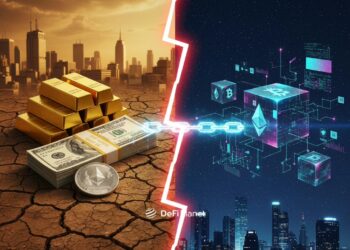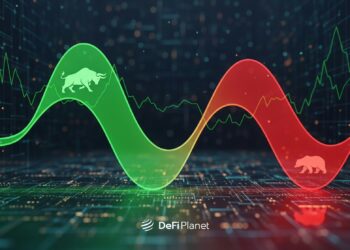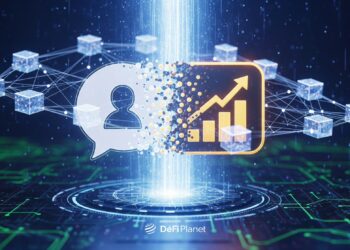Last updated on July 10th, 2023 at 06:50 pm
When the term ‘internet’ made waves in the 1990s, it seemed like a mystery to many. But look where we are now; virtually everyone has access to it. Can the same be said for blockchain technology?
Though this technology has been around for slightly over a decade, the concept still sounds strange and complicated to many. With a lot of skeptics out there, though understandable, one sure thing is blockchain technology is here to stay.
Just like access to the internet is now smooth and seamless, the same will happen to blockchain technology. Because this technology is still in its early stages and with widespread adoption, more development and exploration are still ongoing.
Demystifying the complicated concepts of blockchain technology is what this piece aims to achieve. If you’ve picked interest in this topic and want to learn more, it is not too late.
What is Blockchain Technology?
Blockchain is a set of databases — a collection of electronically stored information — that is unalterable, decentralized, and transparent. Blockchain and distributed ledger technology could be used interchangeably.
When we talk about decentralization, we simply refer to the absence of a central authority or third party, ultimately creating transparency. This forms the basics of blockchain.
Let’s use Google Spreadsheet and Google Docs as examples to better explain this concept.
When a Spreadsheet or Google Doc is created and we decide to share it with a group of people, a decentralized distribution chain is created, giving every party involved access to the document in question at the same time. Any alteration or manipulation of information in the document doesn’t go unnoticed.
While the analogy above gives a rough insight, the blockchain is more complex than the Google Doc or Spreadsheet based on its structure, decentralization, and how it works.
Structure of the blockchain
A blockchain holds large pieces of information in groups known as blocks.
Fun Task:
Think about making a beautiful neckpiece using square-shaped plain beads. Pick one of the plain beads and mark dots on its surface with a pen. Repeat the same with a second bead. The first and the second bead can be joined by passing a string of thread through the little holes between them. Depending on the desired length of the neckpiece, more beads can be added.
The task above explains the blockchain structure. The square bead is the block; the marked dots are pieces of information stored in the block and the string linking all the beads is the hash, which with specific storage capacities, are and the next block is added only when the previous one is filled. This gives a chain of data called the blockchain.,
Because the blockchain operates in a decentralized manner, the timeline of when data is added to each block is stamped and cannot be reversed.
Decentralization as a feature of the blockchain
Decentralization is a major feature of the blockchain. Unlike Spreadsheet or Google Doc, where a single computer or organization can have sole ownership of the blockchain, rather a data is distributed as a ledger among multiple computers connected to the blockchain network.
Millions of computers can be connected and have access to a blockchain network. These computers are called nodes and they keep copies of the blockchain.
Before blocks can be added to the blockchain, all nodes in the network must algorithmically approve. This creates transparency because every action in the ledger can be accessed, checked, and verified. Usually, participating nodes have alphanumeric codes that show every operation carried out.
Working Principle of the Blockchain
It would be difficult to understand how blockchain works without mentioning cryptocurrencies. The development of Bitcoin gave rise to this technology.
Cryptocurrencies and the blockchain
Cryptocurrencies are digital assets like Bitcoin, Ethereum, or tokens, designed to work as a medium of exchange. They can be likened to the digital form of physical cash (fiats). A major feature of these assets is that they use blockchain as a public ledger and other cryptographic algorithms to enhance secure transactions.
With blockchain as a digital ledger, when a cryptocurrency transaction occurs, it is duplicated and distributed across all nodes. In this case, each block in the chain contains several transactions and accompanying details which will be added to the participants’ ledger.
Blockchain was created for Bitcoin to operate — Bitcoin blockchain. But with the development of the Ethereum blockchain by Vitalik Buterin, a Russian-Canadian, in 2013, more sophisticated programs are now being developed on the blockchain.
How the Blockchain Works
The blocks that make up the networks, the participating computers (nodes), and the developers who add blocks to the chain by solving complex mathematical problems (miners) are important concepts that form the blockchain.
Remember our square-shaped bead fun task above?
Recall that a blockchain is a chain of multiple blocks linked together. Each block has three important components — the data on the block, a nonce (a 32-bit whole number that is randomly generated when a block is created) that forms the block header hash; and a hash (a 256-bit number that is joined to the nonce).
The nonce generates the cryptographic hash when the first block is created. The data in the block is considered stamped and permanently joined to the nonce.
Mining
The process of creating and adding new blocks to the chain is called mining. It involves solving complex mathematical problems using specialized computer software.
In mining, a nonce that generates an acceptable hash must be found. With a nonce and a hash being 32 bits and 256 bits respectively, about four billion possible nonce-hash combinations must be mined before the correct one is found. This explains why mining is expensive, time and power-consuming.
When the correct nonce is found, only then can a block be added to the chain. The new ledger is then distributed across all nodes. It’s important to note that many miners compete to add new blocks but the first miner who solves the mathematical problem correctly gets the reward.
Properties of Blockchain
The widespread adoption of blockchain indicates that the technology has some unique features which will be itemized below.
- It is secure: All records on the blockchain are encrypted individually. Once a block is added to the growing chain, it cannot be altered.
- It is distributive: For every transaction or data added to the blockchain, all participating nodes will get a copy of the ledger to promote transparency.
- Immutability: Once records have been verified and added to the blockchain, they are irreversible.
- Transactions are time-stamped: There’s a timestamp for every transaction recorded on the blockchain.
- Protected identity: The identity of participants can be either anonymous or pseudonymous.
- It’s programmable: This means new applications and programs such as smart contracts and DApps can be built on the blockchain cloud networks.
In Conclusion
- Blockchain is a set of databases — a collection of electronically stored information — that is unalterable, decentralized, and transparent.
- A major highlight of using blockchain is to eliminate distrust, such that when valuable data is shared, security and transparency are guaranteed.
- Blockchain was created to enhance the functionality of cryptocurrencies. But it has grown beyond that with several use cases and applications.
- Security, immutability, and decentralization are some inherent properties of the blockchain.




















